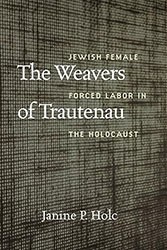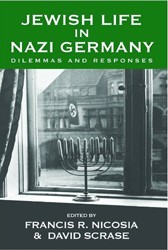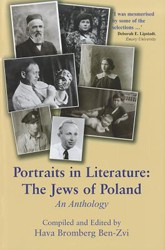This is an extraordinary and original study that focuses on the sites of Jewish memory left behind after the Holocaust in Berlin, Warsaw, Potsdam, Essen, and Wroclaw over the past sixty years. Michael Meng pursues three lines of inquiry: what happened to Jewish sites after the Holocaust? How have Germans, Poles, surviving Jews, and Jewish organizations interacted with these ruins since 1945? And is there a divided memory along East-West lines? What he found is that the handling of Jewish sites did not fall along the line of the Oder-Neisse border and the Iron Curtain. National, political, and local differences shaped what was in many ways a parallel history across a diverse region.
Shattered Spaces is about the shifting history of Jewish sites and the changing encounters with these ruins in postwar Europe. Ruins can be treated as worthless ruble to be swept away, as many of them were in the immediate aftermath, despite protests from Jewish leaders. Or they can be protected, preserved, and restored. How they are dealt with depends on how they are perceived at a specific time and space by particular persons or groups. Once ignored or destroyed, since the mid-1970s Jewish sites have been preserved as valuable ruins in Germany and Poland. After the collapse of the Soviet Union in 1989, this desire to preserve has intensified, thanks to increasing interest in the Holocaust and the rise of heritage tourism.
Meng traces how the Polish and German societies paved over, forgot, and transformed Jewish sites not out of malice, but out of a deep sense of anxiety about the Holocaust. In the early decades to keep these shattered symbols around would evoke the themes of violence, complicity, and indifference. Most Germans did not want to confront their role in the social and physical deaths of the Jewish community. Poles certainly remembered their own suffering at the hands of the Nazis. But they rarely recalled the suffering of their Jewish neighbors and perceived the Shoah as a threat to their own memories of victimization and resistance and an opening to a dark and less heroic chapter of Polish history. No site symbolized this tendency more than Warsaw, where the Poles literally and metaphorically buried the ghetto’s traumatic ruins and paved them over. Meng brings a keen and nuanced understanding of ideological concerns, questions of identity, memory studies, competing historical narratives, the role of monuments ‚and architectural ideals to this fascinating and important topic. Rigorously researched and well-written, the book makes original contributions to the fields of Holocaust studies, postwar Central European history, and memory studies.




